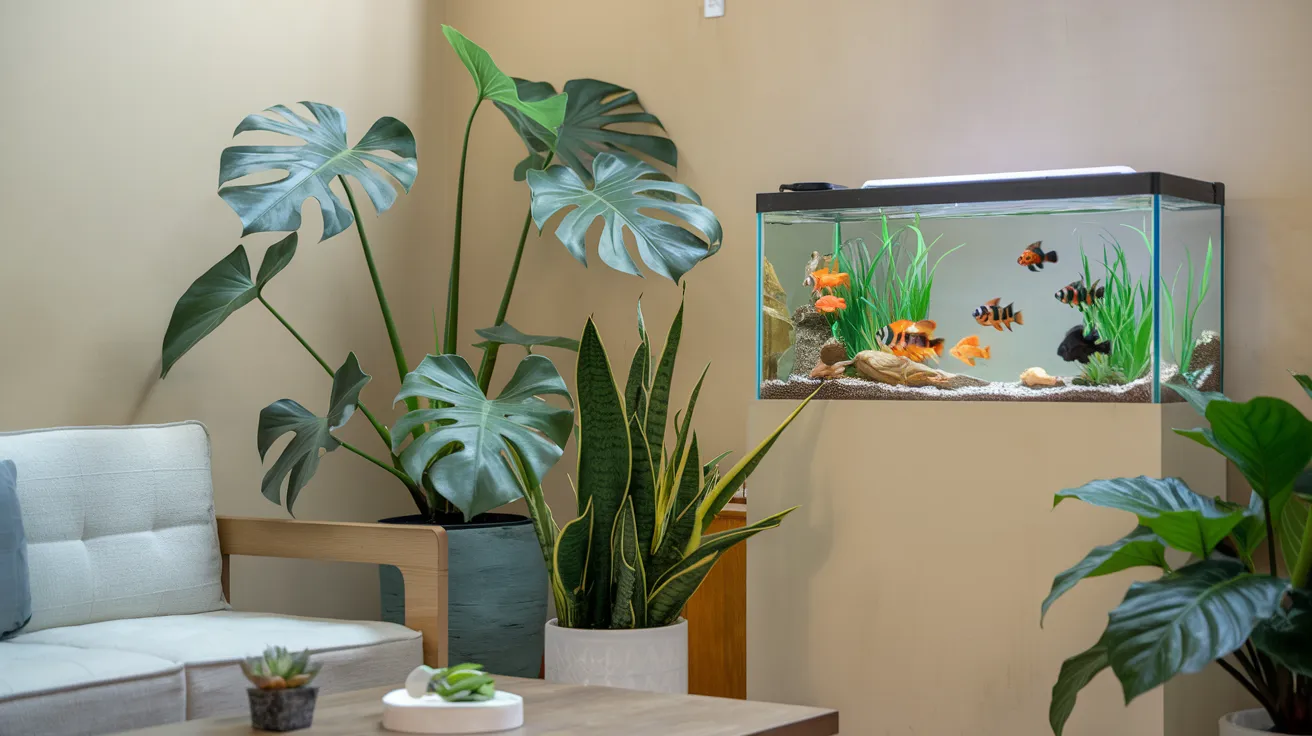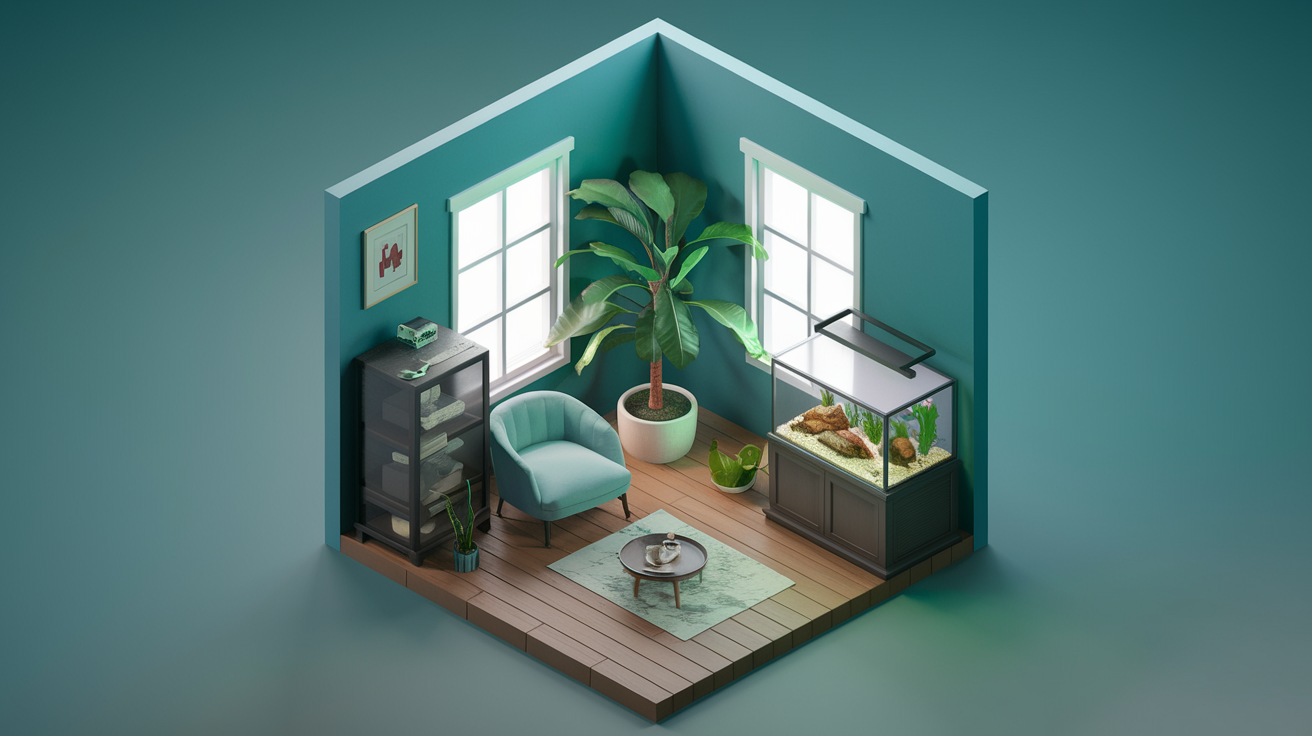My apartment is 20 square meters. That’s roughly the size of a large hotel room, and I’ve been living here for three years now. When people visit, they’re always surprised by how calm and put-together it feels despite being, well, tiny.
Here’s the thing about small spaces: they either work for you or against you. There’s no middle ground. You can’t hide mess behind closed doors when your bedroom is also your living room, kitchen, and office. But that constraint? It’s actually taught me more about creating a peaceful home than any design magazine ever could.
Let me share what I’ve figured out along the way.
The Comfort Factor (It’s Not What You Think)
Everyone talks about buying the perfect furniture for small spaces, but comfort isn’t really about having the right stuff. It’s about having the right stuff for you.
I have this ridiculously oversized reading chair that takes up way too much space. My friends think I’m crazy for keeping it, but sitting in that chair with a cup of tea is my daily dose of sanity. Sometimes the “impractical” choice is actually the most practical one for your mental health.
☕ The Chipped Cup Philosophy
Your comfort essentials might be completely different from mine. Maybe it’s a collection of vintage books, a fuzzy throw that’s seen better days, or that plant you’ve somehow kept alive for six months. The key is being honest about what actually brings you peace versus what you think should bring you peace.
Lighting That Doesn’t Suck
Can we talk about how most apartments have absolutely terrible lighting? Those harsh overhead fluorescents that make everything look like a crime scene? Yeah, those need to go.
I’ve become somewhat obsessed with lighting over the years. Natural light during the day is non-negotiable—I rearranged my entire furniture layout just to maximize it. But evening lighting is where the magic happens.
💡 The 4000K Discovery
Floor lamps are your best friend in small spaces. They provide ambient light without taking up precious surface area. I have this purple grow light for my monstera that doubles as mood lighting. It sounds weird, but the soft purple glow is surprisingly relaxing.
Don’t be afraid to experiment with different light temperatures. What works for your friend might make you feel like you’re living in a doctor’s office.
Wall Colors That Actually Work
Color Palette Selector
The whole “light colors make spaces look bigger” advice isn’t wrong, but it’s incomplete. Yes, my walls are a soft gray-white, and yes, it makes the place feel more spacious. But here’s what design blogs don’t tell you: the right color is the one that doesn’t make you feel claustrophobic after living with it for six months.
I tried the accent wall thing once—painted one wall a deep teal because it looked amazing on Pinterest. Lived with it for two weeks before I couldn’t stand it anymore. Too much visual weight in a small space made me feel trapped.
Now I stick with variations of the same neutral tone throughout, but I add personality through artwork and textiles. It’s more flexible, and honestly, easier to change when you get bored.
🎨 The Great Paint Experiment
Temperature: The Unsung Hero of Home Comfort
Nobody talks about how much temperature affects your mood at home, but it’s huge. I keep my place between 20-22°C (68-72°F) during the day, slightly cooler at night. Sounds basic, but consistency is everything.
Small spaces heat up and cool down quickly, which can be both blessing and curse. In summer, I’ve got a decent fan and blackout curtains to keep the heat out. Winter means layers—lots of cozy blankets and a space heater I can move around as needed.
The trick is finding your sweet spot and then making it easy to maintain. I used to constantly fidget with the thermostat until I realized I was just making myself uncomfortable.
Digital Boundaries (Yes, Really)
This might be the most important section, and it’s probably the one people skip. Your phone is probably the biggest threat to your peaceful home environment, and I’m not being dramatic.
I used to scroll through social media in bed, on the couch, while eating—basically everywhere. My apartment felt chaotic even when it was clean because my mind was chaotic. Now I have some pretty strict rules about screen time at home.
📱 The Phone Basket Revelation
Mornings are completely screen-free until I’ve had coffee and gotten dressed. Evenings have a hard cutoff—no social media after 8 PM. It took about two weeks to adjust, but now I actually look forward to these quiet moments.
Also, curate your feeds ruthlessly. If an account makes you feel anxious or inadequate, unfollow it. Your mental space is just as important as your physical space.
Bringing Nature Inside (Without Becoming a Plant Parent)
Everyone says to get plants, but honestly? I’ve killed more plants than I care to admit. For the longest time, I felt like a failure because I couldn’t keep a succulent alive.
Then I discovered artificial plants that don’t look completely fake, and my life got so much easier. I have a few from IKEA mixed with one real plant that I somehow haven’t murdered yet—a monstera that’s surprisingly forgiving.

The real game-changer, though, is getting outside daily. Even if it’s just a 10-minute walk around the block with no destination in mind. Living in a small space means you need to expand your environment beyond your four walls regularly.
🌳 City Nature Hunting
The Sound of Home
Silence can be golden, but it can also be suffocating. I’ve learned that the right background noise makes my space feel alive rather than isolated.
Sometimes I open the windows just to hear the city sounds—traffic, people talking, life happening. It reminds me that I’m part of something bigger than my tiny apartment. Other times, I’ll put on a cooking show at low volume, not because I’m watching, but because the gentle chatter makes the space feel less lonely.
This probably sounds weird to people who live with others, but when you live alone in a small space, creating the right audio environment is crucial for your sanity.
The Pet Question
I have a small fish tank with a few gobies. They’re about as low-maintenance as pets get, but watching them swim around is surprisingly meditative. Plus, they give me something to care for without the responsibility of a dog or cat in a tiny space.
Not everyone is a pet person, and that’s fine. But if you’re on the fence, consider how much life a small aquarium can add to a room. The gentle filter sound is actually quite soothing too.
Cleaning Without Losing Your Mind
The “10-minute pickup” rule has saved my sanity more times than I can count. Every evening before bed, I spend exactly 10 minutes putting things back where they belong. Not deep cleaning, just restoring order.
In a small space, mess compounds quickly. One day of dishes in the sink becomes overwhelming visual clutter. But 10 minutes? That’s manageable even on the worst days.
📦 The Storage Reality Check
Storage solutions help, but they’re not magic. Under-bed boxes, wall shelves, furniture with hidden compartments—all useful. But the best storage solution is often just having less stuff to store.
The Weird Stuff That Works
Here are some things I’ve discovered that might sound odd but actually make a difference:
Having a designated “worry spot”—one specific chair where I allow myself to stress about things. Everywhere else in the apartment is worry-free. It sounds ridiculous, but it works.
Keeping a small notebook by my bed for random thoughts that pop up when I’m trying to relax. Getting them out of my head and onto paper helps me actually unwind.
Changing my bedsheets every Sunday, not because they’re dirty, but because fresh sheets feel like a mini-vacation.
Playing the same playlist during my evening routine. It signals to my brain that it’s time to wind down.
The Long Game
Creating a peaceful home isn’t about having the perfect space—it’s about having a space that works for your specific brand of chaos. My apartment looks nothing like those minimalist Instagram homes, and that’s okay.
Some days it feels like a sanctuary. Other days it feels like a very small box. Both are normal. The goal isn’t to create a museum; it’s to create a place where you can breathe.
🔄 The Ongoing Experiment
The most peaceful homes aren’t perfect ones. They’re the ones where you can be yourself without apology, where your weird habits are accommodated, and where you genuinely want to spend time.
Your version of peaceful might be completely different from mine, and it should be. Take what works, ignore what doesn’t, and remember that your home should serve you, not the other way around.
Stay up to date
Get notified when I publish something new, and unsubscribe at any time.
